
Case Based Roundtable Series

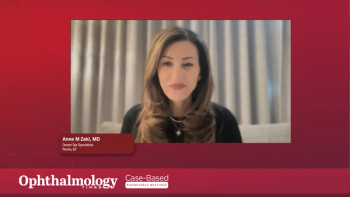
An experienced clinician discusses the challenges of identifying and managing a common yet often overlooked eyelid condition. She emphasizes a systematic approach to diagnosis, the importance of differentiating it from other ocular surface diseases, and how emerging therapies can transform patient care. Through practical insights and case examples, she demonstrates how accurate detection and targeted treatment can dramatically improve comfort, vision, and quality of life for patients struggling with chronic irritation and inflammation.
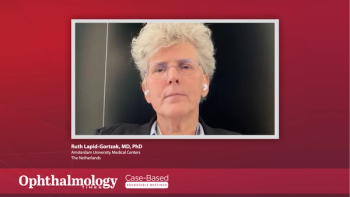
An expert discusses evolving best practices in the diagnosis and management of Demodex blepharitis, highlighting collarettes as pathognomonic and sufficient for diagnosis, the importance of targeting high-risk patient groups for treatment, and the promise of a new pharmacologic therapy that shifts care toward a more effective, flexible, and patient-centered approach.

Mark Lobanoff, MD, discusses how the IC-8 Apthera small aperture intraocular lens functions as a pinhole-based optical system to create extended depth of focus, demonstrates successful salvage of a complicated light adjustable lens case through lens exchange after pinhole testing, and emphasizes the critical importance of controlling central 3-mm zone astigmatism and ensuring nighttime pupil size remains under 5 mm for optimal visual outcomes in keratoconus patients requiring adjunctive photorefractive keratectomy.
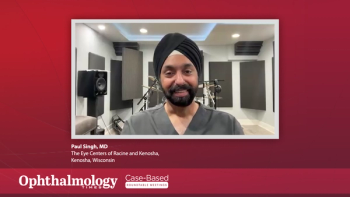
Panelists discuss how interventional glaucoma strategies, sustained-release drug delivery implants, and the versatile iDose device advance care by enabling earlier treatment, improving adherence, and expanding surgical options for long-term disease control.

Sahar Bedrood, MD, PhD, discusses how glaucoma treatment has evolved from a reactive wait-and-see approach to a more proactive strategy that emphasizes early procedural interventions such as sustained-release implants and minimally invasive surgeries to minimize medication burden and vision loss.

Michael W. Stewart, MD, discusses how high-dose aflibercept (8 mg) can achieve better anatomical and visual outcomes compared with standard anti-VEGF therapies in patients with treatment-resistant diabetic macular edema and neovascular age-related macular degeneration, demonstrating improved retinal drying and extended treatment durability through 3 detailed clinical cases.
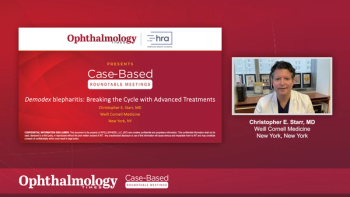
Christopher E. Starr, MD, discusses how to identify, diagnose, and effectively treat Demodex blepharitis in both preoperative cataract patients and contact lens wearers, highlighting the importance of eradicating these mites using FDA-approved lotilaner ophthalmic solution to improve visual outcomes and quality of life.
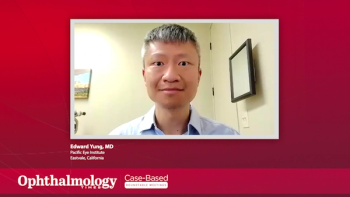
An expert discusses how innovative viscoelastic delivery systems are enhancing precision, control, and safety in ophthalmic surgery by improving anterior chamber stability, protecting intraocular structures, and optimizing surgical outcomes.

Steven J. Dell, MD discusses how managing cataract surgery in post-refractive surgery patients presents unique challenges including accurate IOL power calculation, epithelial healing variability, and the need for specialized approaches such as piggyback IOLs and careful lens selection to meet high patient expectations for spectacle independence.
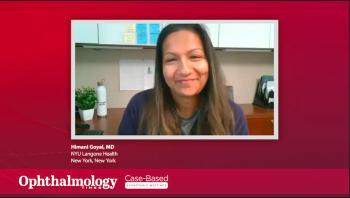

Nikolas JS London, MD, FACS presents two cases, one with a 92-year-old woman with a long history of bilateral nAMD, and one with a 70-year-old man with IDDM.
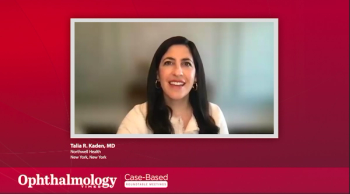
Talia R. Kaden, MD, presents multiple patient cases including a case of choroidal neovascularization with polypoidal choroidal vasculopathy, diabetic macular edema, recurrent retinal vein occlusion, and neovascular age-related macular degeneration with persistent subretinal fluid.
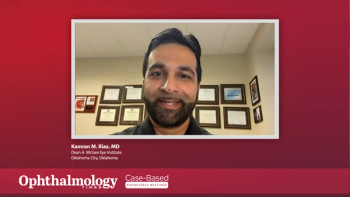
Kamran Riaz, MD, presents an overview of enhanced monofocal IOLs and discusses special cases where they could be considered in addition to conventional cataract surgery.
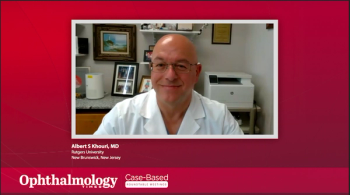
Albert S. Khouri, MD, describes two patient cases with different stages of glaucoma and discusses interventional treatment options, including selective laser trabeculoplasty and various MIGS devices.

Richard Adler, MD, FACS, reviews thought-provoking patient cases to showcase how the diagnosis and management of dry eye disease can be improved.
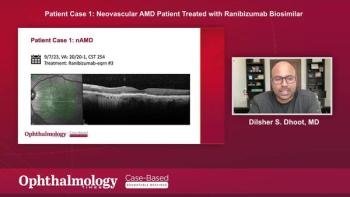
Dilsher S. Dhoot, MD shares his experience leading a case-based roundtable discussion on anti-VEGF biosimilars for retinal diseases, highlighting key insights from each patient case.
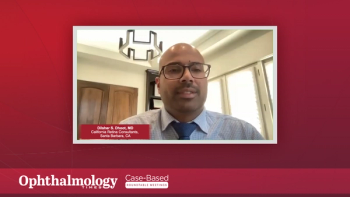
Dr Dilsher Dhoot shares his experience of using anti-VEGF biosimilars for managing retinal diseases and presents two patient cases where he achieved significant anatomic improvement by using a ranibizumab biosimilar.

Dr Sunil Srivastava shares valuable insights from a recent roundtable discussion on managing chronic non-infectious uveitis and macular edema and presents two cases from his practice.

Dr Rishi Singh provided valuable insights into the utilization of anti-VEGF biosimilars for managing Age-Related Macular Degeneration (AMD) and Diabetic Macular Edema (DME) and shares two patient cases that showcase the anatomic and visual improvement achieved by using a ranibizumab biosimilar.

A pediatric ophthalmologist shares two cases of myopia management in children and highlights her treatment approach to prevent myopia progression.
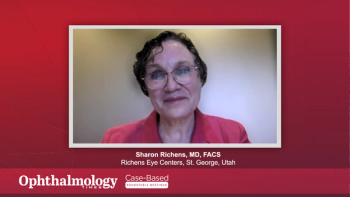
Dr Sharon Richens shares insights from a recent Ophthalmology Times round table on the advantages and considerations of providing a broader selection of premium intraocular lenses to patients.
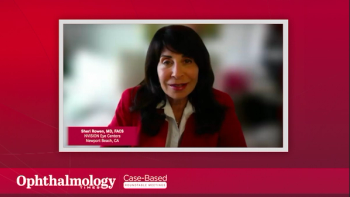
Dr Sheri Rowen addresses dry eye management in patients with ocular comorbidities and highlights the importance of comprehensive dry eye exams and differentiation from neurotrophic keratitis.
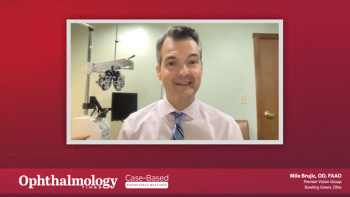
An expert optometrist shares 2 dry eye disease patient cases discussed at a recent roundtable.
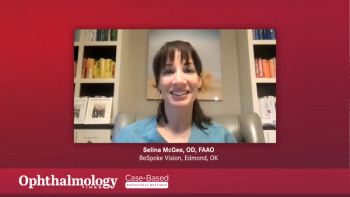
Dr Selina McGee explores two cases of dry eye management, providing insights into her detailed evaluation process and her approach to optimizing the ocular surface, especially in preparation for surgery, ensuring better patient outcomes.
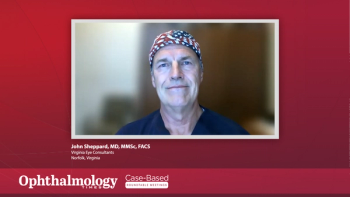
Dr. John Sheppard shares two cases of dry eye, shedding light on effective management strategies. He emphasizes the crucial role of patient history and highlights the significance of considering ocular and systemic medications that could potentially worsen dry eye symptoms.
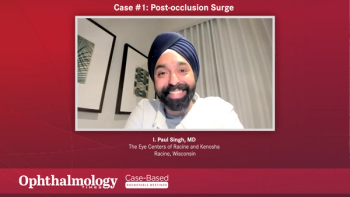
Paul Singh, MD, showcases surgical cases of phacoemulsification, demonstrating the remarkable impact of advanced technologies such as adaptive fluidics and synchronized fluid exchange on transforming the surgical experience for anterior segment surgeons.

Neda Shamie, MD, discusses two patient cases and highlights the factors to consider when choosing intraocular lenses for cataract surgery. She emphasized the importance of considering patient factors and needs in selecting the right lens option.

An expert cataract and refractive surgeon shares 2 myopia and astigmatism cases discussed at a recent Ophthalmology Times Roundtable.
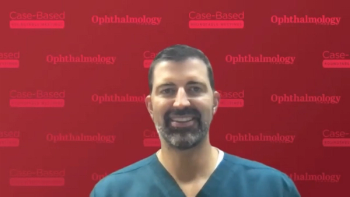
In this program, Dr. Daniel Kiernan shares insights from a recent Ophthalmology Times case-based roundtable meeting where he discussed two cases of DME, assessed the clinical presentations and treatment choices, and evaluated patient outcomes.



.png)


